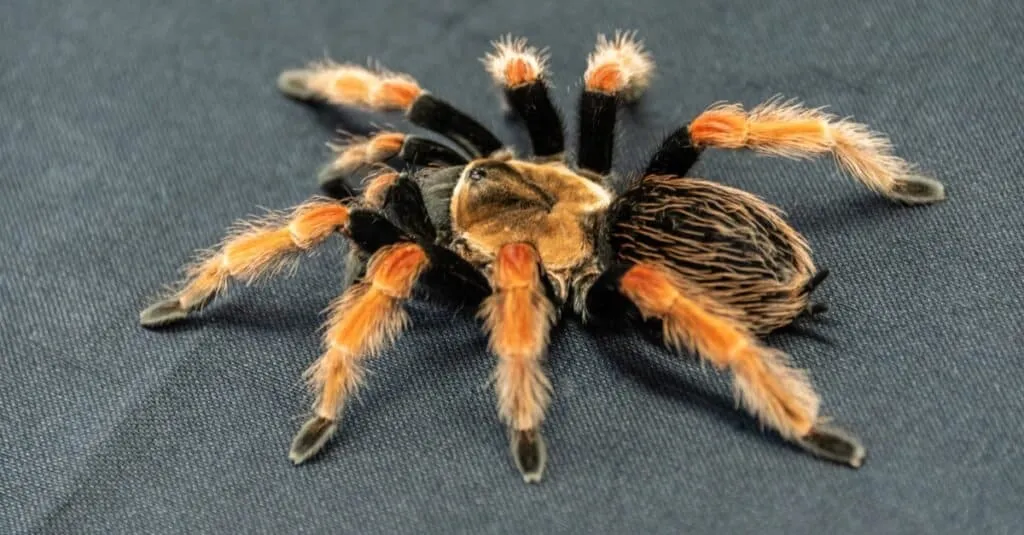The Red Knee Tarantula, scientifically known as Brachypelma hamorii, is a popular pet due to its striking appearance and relatively docile nature. However, like any pet, they require specific care to thrive. This guide unveils the top 5 secrets to ensure your Red Knee Tarantula lives a long, healthy, and fulfilling life. By understanding these key aspects, you can provide the best possible environment for your eight-legged friend and enjoy the unique experience of owning this fascinating creature.
Red Knee Tarantula: Secret 1 - Habitat Setup
Creating the right habitat is the foundation of Red Knee Tarantula care. A well-designed enclosure mimics their natural environment and is crucial for their well-being. This includes the right size, appropriate substrate, essential furnishings, and maintaining the correct temperature and humidity levels. Failure to provide a suitable habitat can lead to stress, health issues, and a shortened lifespan. Remember that a happy tarantula is a healthy tarantula, and the habitat is where it all begins.
Enclosure Size
The enclosure size for a Red Knee Tarantula should be appropriate for its size. A juvenile tarantula can comfortably live in a smaller enclosure, while a mature adult requires more space. As a general rule, the enclosure should be at least three times the tarantula’s leg span in length and width. This allows for movement, burrowing (if they choose to), and a comfortable environment. Ensure the enclosure has a secure lid to prevent escape, as tarantulas are surprisingly adept at climbing.
Substrate and Furnishings
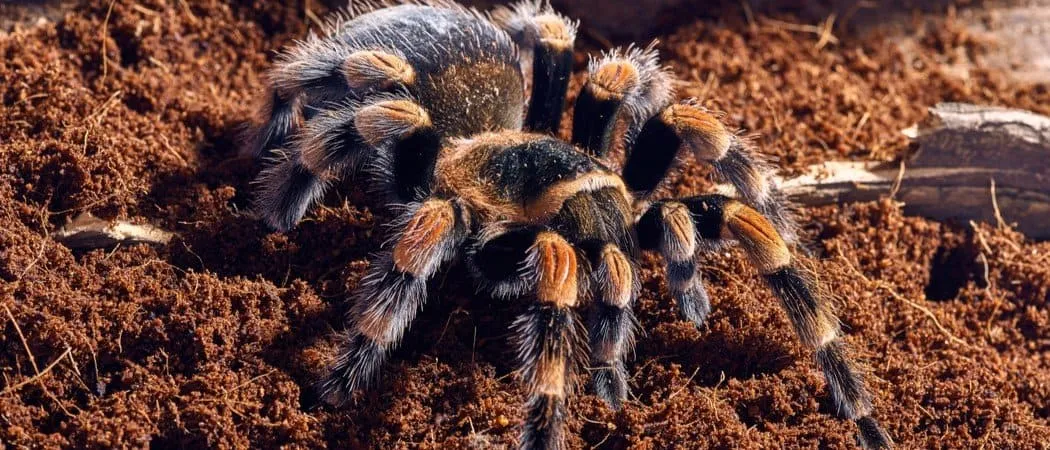
The substrate, or bedding, is essential for maintaining humidity and providing a natural environment. A good substrate for a Red Knee Tarantula is a mixture of coco fiber, peat moss, and a bit of vermiculite. This blend retains moisture well and allows the tarantula to burrow. The substrate should be deep enough for burrowing, usually 3-6 inches. Furnishings like a hide (cork bark, half log) are crucial for providing a safe space where the tarantula can retreat and feel secure. Adding a shallow water dish is also vital for hydration.
Temperature and Humidity
Red Knee Tarantulas thrive in specific temperature and humidity ranges. The ideal temperature is between 75-85°F (24-29°C). A heat source, such as a low-wattage heat mat, can be used to maintain this temperature, but it should be placed on the side of the enclosure, not directly under it. Humidity should be maintained at around 60-70%. This can be achieved by lightly misting the enclosure once or twice a week, or by ensuring the substrate stays slightly moist. Regularly monitor the temperature and humidity with a thermometer and hygrometer.
Red Knee Tarantula: Secret 2 - Feeding
Proper feeding is another critical secret to Red Knee Tarantula care. Providing the right food, in the correct amounts, and at appropriate intervals is essential for their health and growth. Overfeeding can be as detrimental as underfeeding. Understanding their dietary needs will contribute to a long and healthy life. Always ensure that any food offered is safe and that the tarantula has access to fresh water.
Best Food Choices
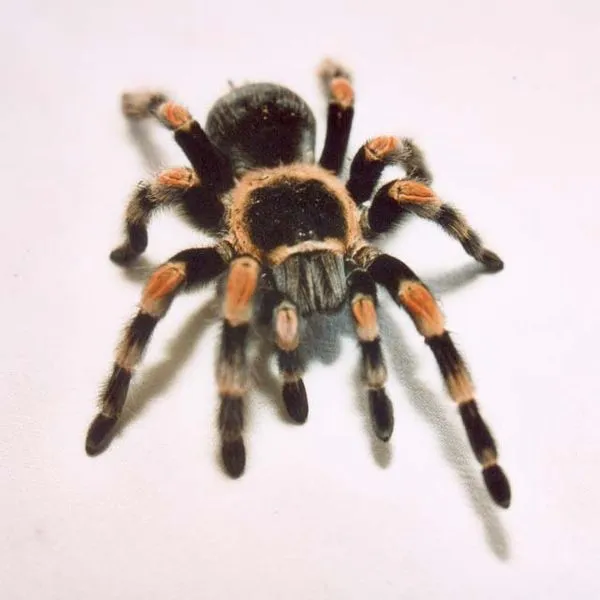
Red Knee Tarantulas are primarily insectivores. Crickets, mealworms, and roaches are excellent food choices. Variety is beneficial, so rotating between different insects can provide a more balanced diet. Always make sure the insects are gut-loaded (fed nutritious food) before offering them to your tarantula, as this passes essential nutrients to the spider. Avoid feeding wild-caught insects, as they may carry parasites or pesticides. The insects should be no larger than the tarantula’s body size.
Feeding Frequency
The feeding frequency depends on the tarantula’s age and size. Spiderlings (young tarantulas) can be fed every other day or every day. Juvenile tarantulas can be fed 2-3 times a week. Adult Red Knee Tarantulas typically only need to be fed once a week or even less frequently. Observe your tarantula’s abdomen; if it looks plump and full, it is likely well-fed. Remove any uneaten food within 24 hours to prevent mold or mites from developing.
Watering and Hydration
Fresh, clean water is vital for your Red Knee Tarantula’s hydration. Provide a shallow water dish that is easily accessible. Make sure the water dish is not too deep, to prevent the tarantula from drowning. Replace the water regularly, at least twice a week, to keep it fresh and clean. During molting, maintaining proper hydration is especially critical, as it aids the process. A water source is a non-negotiable aspect of tarantula care.
Red Knee Tarantula: Secret 3 - Handling and Interaction
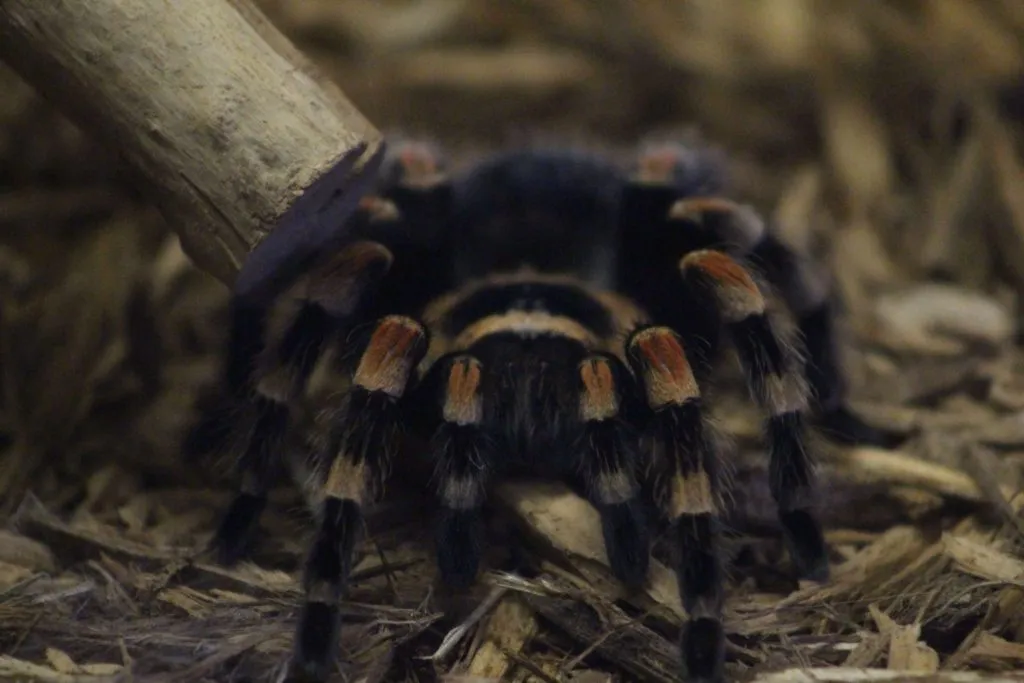
While Red Knee Tarantulas are known for their relatively docile nature, handling them is not always necessary or recommended. Understanding when and how to handle them safely, as well as recognizing their stress signals, is essential for both your safety and the tarantula’s well-being. It’s crucial to respect the tarantula’s space and boundaries, prioritizing its comfort and security.
When to Handle
Handling should be kept to a minimum, as it can stress the tarantula. Handle your Red Knee Tarantula only when necessary, such as for health checks or to move it for enclosure maintenance. Even then, approach with caution and observe the tarantula’s behavior. Some tarantulas are more tolerant of handling than others, but it’s best to err on the side of caution and avoid handling unless completely necessary. Frequent handling can disrupt their natural behaviors and potentially lead to defensive reactions.
Proper Handling Techniques
If you must handle your tarantula, do so gently and slowly. Approach from the side, and allow the tarantula to walk onto your hand. Avoid grabbing or touching the tarantula’s fangs or abdomen. Keep your movements slow and steady. Always handle the tarantula close to the ground or a soft surface, in case it falls. Wash your hands thoroughly before and after handling, and avoid using scented soaps or lotions, as the chemicals can be irritating to the tarantula.
Recognizing Stress Signals
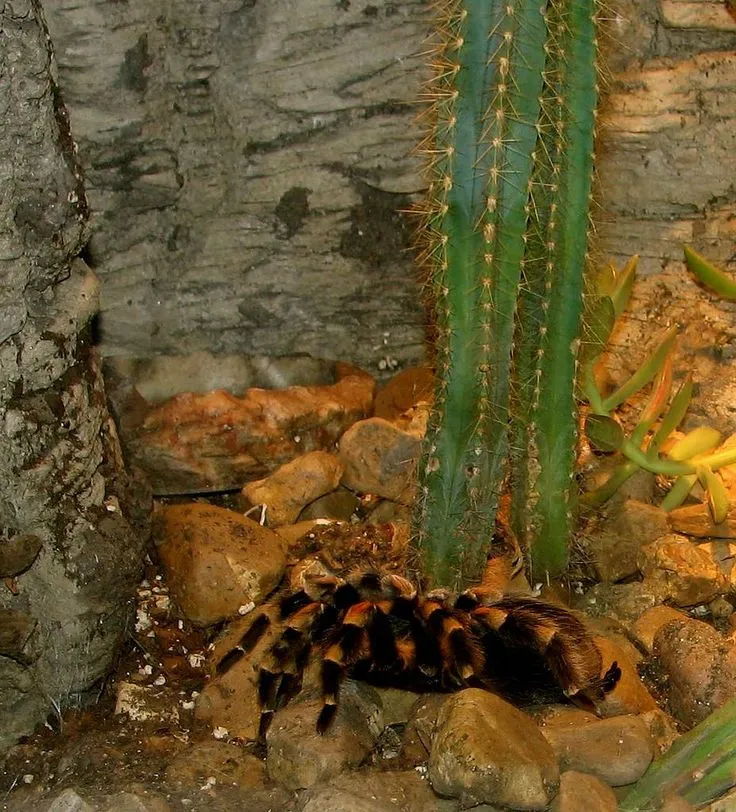
It’s crucial to recognize signs of stress in your Red Knee Tarantula. These include flicking hairs (defensive behavior), rearing up, raising their front legs, or attempting to flee. If your tarantula displays any of these behaviors, it’s best to leave it alone. These are clear indications that the tarantula is feeling threatened and should be left in peace. Providing a secure and stress-free environment is key to their well-being.
Red Knee Tarantula: Secret 4 - Health and Wellness
Maintaining the health and wellness of your Red Knee Tarantula involves being aware of potential health issues, understanding the molting process, and implementing preventative care measures. Proactive monitoring and care are critical to ensuring a long and healthy life for your pet. A healthy tarantula will exhibit vibrant colors, a good appetite, and an active demeanor. Watch for any changes in behavior or appearance.
Common Health Issues
Common health issues in Red Knee Tarantulas include dehydration, parasitic infections (mites), and injuries during molting. Dehydration can be prevented by ensuring the tarantula has access to fresh water and maintaining the correct humidity levels. Mites can be controlled by maintaining a clean enclosure and removing any uneaten food. Injuries during molting can occur if the environment is too dry or if the tarantula is disturbed during the process. A healthy diet and a suitable habitat are key to minimizing health risks.
Molting Process
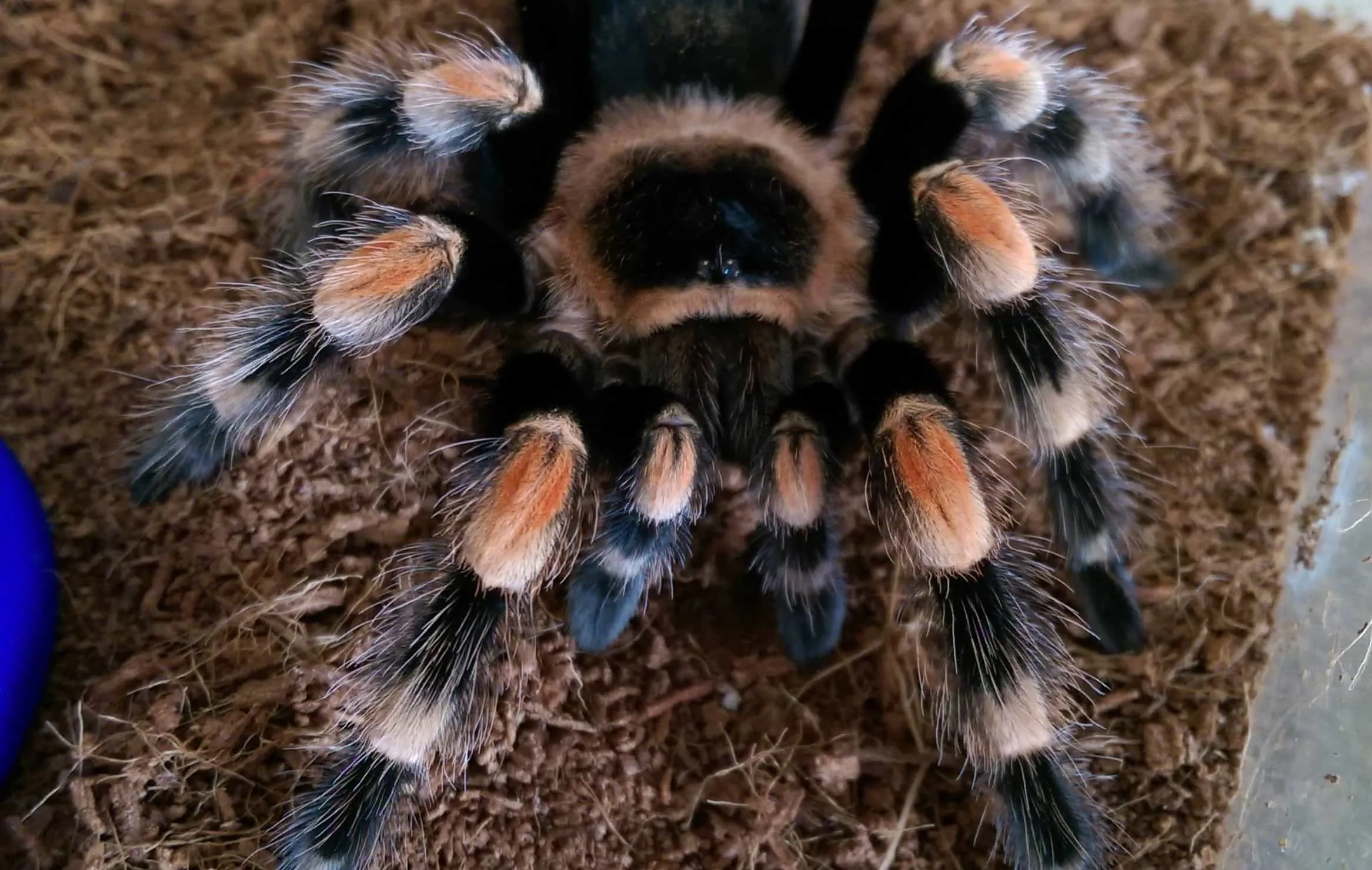
Molting is a natural process where the tarantula sheds its exoskeleton to grow. Before molting, the tarantula may become less active, lose its appetite, and its abdomen may appear darker. During molting, it will usually lie on its back. Do not disturb a tarantula during this vulnerable time. Provide extra humidity and ensure the enclosure is secure. After molting, the tarantula will be soft and vulnerable for a few days, so avoid handling and provide extra care. Do not feed the tarantula until its fangs have hardened.
Preventative Care
Preventative care includes regular enclosure maintenance, providing a balanced diet, and monitoring your tarantula’s behavior. Clean the enclosure regularly, removing any waste and uneaten food. Ensure the water dish is always full and clean. Observe your tarantula for any signs of illness or stress. If you notice anything unusual, consult with a veterinarian who specializes in exotic animals. Early detection and intervention are critical for successful treatment.
Red Knee Tarantula: Secret 5 - Long-Term Care
Long-term care encompasses understanding the Red Knee Tarantula’s lifespan and growth, as well as any considerations for breeding. Being prepared for the different stages of their life cycle is essential for providing the best possible care. This includes adjusting the enclosure, diet, and care routine as they grow. A commitment to their long-term well-being is vital for responsible ownership.
Lifespan and Growth

Red Knee Tarantulas have a relatively long lifespan. Females can live for 15-30 years, while males typically live for 5-10 years. Their growth rate varies depending on factors like diet, temperature, and genetics. They molt periodically throughout their lives, shedding their exoskeleton to grow. Proper care and a suitable environment contribute significantly to their longevity and healthy development. Be patient and enjoy the process of watching your tarantula grow and mature.
Breeding Considerations
Breeding Red Knee Tarantulas is a more advanced aspect of care. It requires a good understanding of tarantula behavior, genetics, and the specific requirements for breeding. If you are considering breeding, research thoroughly and be prepared to provide a separate enclosure for the female and the eggsac. Breeding tarantulas is a significant undertaking, and the offspring will require careful attention and dedicated care. This is not usually recommended for beginners.
Finding a Veterinarian
It’s wise to locate an exotic animal veterinarian in your area before any health issues arise. A veterinarian specializing in exotic animals can provide expert medical care if your Red Knee Tarantula becomes ill or injured. They can offer preventative care advice and help you with any specific health concerns. Having a veterinarian readily available can be crucial in providing the best possible care. Research and choose a veterinarian with experience in tarantula care and treatment.
By following these five secrets, you can provide your Red Knee Tarantula with the care it deserves, ensuring a long, healthy, and fulfilling life. Remember that responsible pet ownership requires continuous learning and adaptation. Enjoy the unique experience of owning a Red Knee Tarantula, and cherish the opportunity to learn more about these fascinating creatures. With proper care, your Red Knee Tarantula will become a valued and captivating member of your family.
